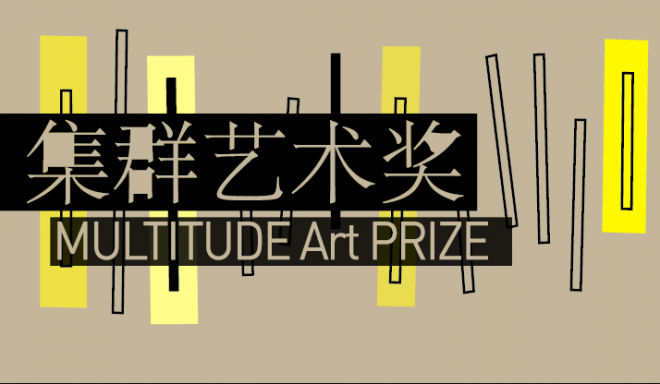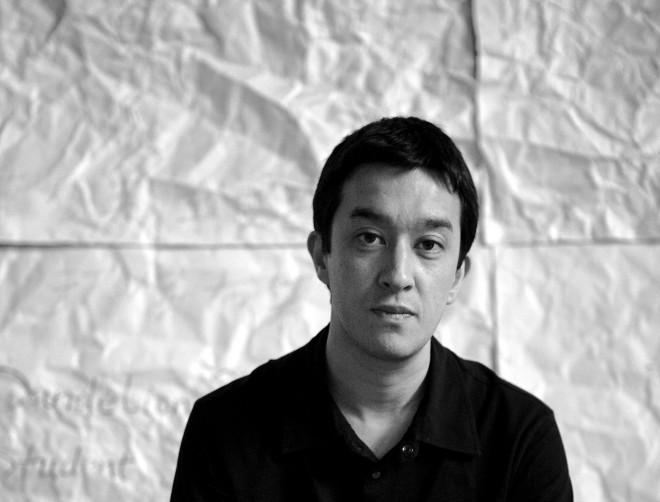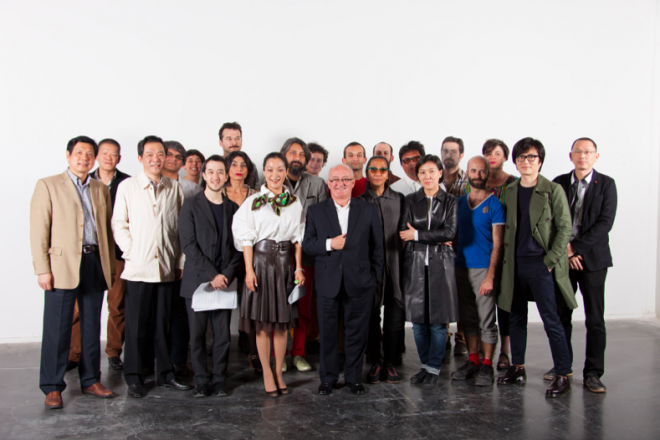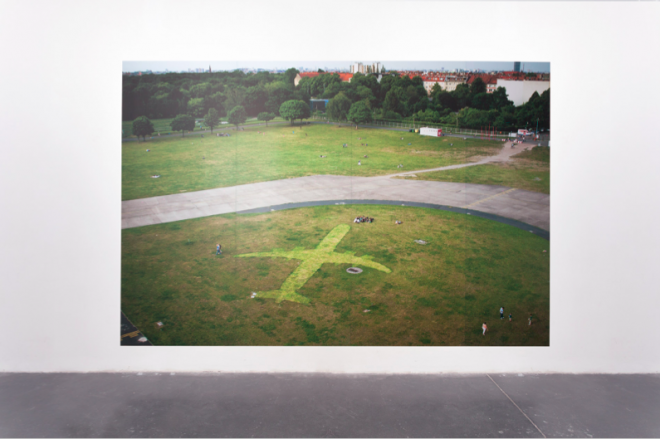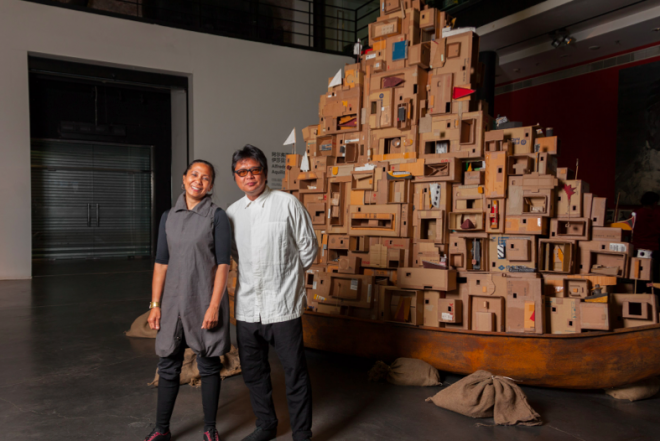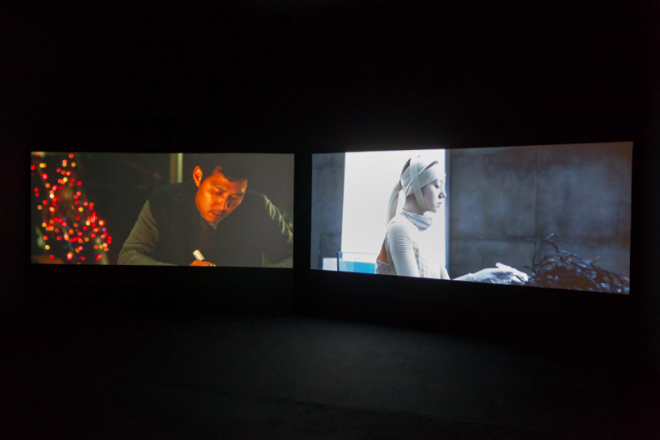In April this year, the Multitude Foundation and Wuhan Art Terminus (WH.A.T.) unveiled the inaugural edition of the Multitude Art Prize, in collaboration with the Ullens Center for Contemporary Art (UCCA). The idea will be to hold annual exhibitions in different Asian cities, where five artists or artist groups will be featured. Aside from the prize, there will be conferences and talks.
randian 燃点 recently chatted over e-mail with Colin Chinnery, the director of the Multitude Art Prize (and randian 燃点 contributing editor), about the operation and aims of the Prize. Colin Chinnery is an artist and curator. Currently the artistic director of the Wuhan Art Terminus, he was also the director of the (now defunct) SHContemporary Art Fair in Shanghai in 2009 and 2010. He was also previously the Chief Curator and Deputy Director at UCCA in Beijing.
Daniel Szehin Ho: How will the Multitude Art Prize work as a traveling art competition work in practice?
Colin Chinnery: The main aim of the project is to increase dialogue and collaboration between different regions of Asia. Therefore, our method is about finding the right partner to collaborate for each edition. The first edition was based on my home turf, Beijing, and working with UCCA and Phil [Tinari] was a natural choice. However, it’s more challenging to find the right partner in other Asian regions I know much less about. But that is the point. In order for this project to have longevity, I need to do research and get to know different places in Asia, getting to know the various art scenes and institutions and curators, so that we can find a suitable partner for each edition. In this process we accumulate friends and partners along the way. We already have a very interesting potential partner for our second edition, although I can’t say who or where until things are confirmed. However, it needs to make sense in a much broader sense than simply providing a venue. It means thinking about the exhibition and conference structure together, and having a team that can deliver. It means being able to communicate with the local art scene and broader public in that region also. The exhibition and conference needs to exist in a way that makes sense for the context it’s in, so the project evolves along the way, and accumulates different kinds of Asian experience along the way. However, none of this would be possible without core funding which has been provided by the Wuhan Art Terminus (WH.A.T.).
DH: Could you explain the process of nominating and selecting the artworks?
CC: We have eight curators each year who nominate five artists each (one curator for each Asian region and other partner curators). These curators change each year. This gives a long list of about 40 artists. The jury consists of speakers invited to the conference. This is an important element of the project, as many of the speakers won’t be artists or curators, but philosophers, writers, musicians, etc. People who engage deeply in different facets of contemporary culture, but not necessarily experts on contemporary art. When I engage the nominating curators, I ask them to nominate those artists who they feel fit their understanding of ‘multitude’ or a kind of relevance for their context. The jury is asked to select five artists each, one from each region. Not only are they asked to select artists who fit their concept of ‘multitude’, but to create a kind of five artist group show that also approaches this idea. That is why this year’s Multitude Art Prize exhibition had such an interesting mix of different genres and media. This is the biggest difference between having one final winner and a group of five.
DH: Isn’t there a danger that this would end up being a product of the lowest common denominator — that in trying not to offend anyone, or more importantly, any government or ideology, it will end up precisely becoming a very “1%” cultural ritual?
CC: This project is not about keeping people happy. It aims to constantly ask the question why art is still important and a necessary component for society, or rather, different kinds of societies all over Asia. Different regions of Asia have their particular sensitivities, and this is a very important part of the process. We want to ask questions about artistic practice in different contexts, and that includes prohibitions and taboos. Having limits has always been an important part of creativity. In a way, this is a question that can define our understanding of artistic practice in Asia.
DH: Is it possible to have a depoliticized ethical stance?
CC: The limits of the political and ethical are too porous to define. An abstract painting can be highly political in certain contexts, while in other contexts something as simple as a portrait can be confrontational. Similarly, artist engagement in particular political issues can be contrasted with other artists who think only of their work. Which is more ethical, the former or the latter? There is no simple answer, as the particulars of each case have to be understood in context. This is another important reason why the Multitude Art Prize travels across Asia. I don’t believe there is a universal standard for art, so we need to enter each context in order to underatand the issues artists are facing.
DH: Does “Asia” even exist as a coherent entity? Or is it just the object of a EurAm-centric perspective or gaze?
CC: The gaze is something central to how this project came about. Each region of Asia has its own coherent culture and history like Europe, but what each Asian region has in common when it comes to contemporary art is how their gaze often gravitates to the West rather than to other regions of Asia. This is understandable, as the hegemonic centre of the contemporary art world still lies in the West. There is a similar gaze from the West upon Asia. Both gazes are fetishized and problematic. They want different things from each other. The former wants recognition, and the latter wants stimulation. There’s the desire for quick satisfaction on both sides, but this can often result in disappointment or alienation. It’s hard to say to what extent and in what way Asia exists as an entity, but there are common historical and cultural roots that go back a long time. The Silk Road and other trade routes used to link different parts of Asia together, creating veins of cultural transmission that brought Buddhism to China and took silk and ceramics westward. We take inspiration from this fluid model, and contemporary culture needs more fluidity, more conversations, and less post-colonial type attitudes. The Indian scholar Ravi Sundaram who was on this year’s jury and was a speaker at the conference said at our press conference that the idea of Asia needs to be reinvented, critically. He also said that he believes the Multitude Art Prize is doing exactly that, and therefore it’s “an idea whose time has finally come.”
DH: Why is it that many “post-colonial” — that is, non-Western countries — are still fixated on this putative Euro-American center (of culture, philosophy, etc., more than finance and economics, these days)?
CC: Each profession has its own sense of ‘centre’. I seriously doubt that those practicing or promoting traditional culture in any part of Asia will consider the West as a centre. Contemporary art or philosophy is rooted in a Western cultural tradition, and the most influential practitioners and institutions are mostly still in the West. It’s a matter of quality and quantity. Whenever there’s a centre there will always be imbalance, and that is why more conversations between non-Western peers are so important.
DH: And is there something more particular about China due to the fact that it was basically shut off from the capitalist First world (and to a degree even from the Communist bloc) for more than 30 years?
CC: I don’t believe China is any more or less particular than other Asian region. If you look at the post-War history of Japan and Korea, they were both occupied by America in the immediate post-War period, but subsequently had very different historical and cultural trajectories. Now they look fairly similar again, but are they? China’s particularity is related to its Mao-era insularity, but also related to its May Fourth cultural and political modernist roots. Contemporary thinking is secular in nature, and the whole modernization drive during the Republican period is what Chinese thinkers can fall back on to circumvent either Communist or capitalist pressures.
DH: In general terms, what future areas/countries/avenues look interesting to you and the Multitude Art Prize? Or maybe another way of asking this is: what do you see the Multitude Art Prize being in 5 or 10 years?
CC: It is very likely that the Multitude Art Prize will be traveling to the Middle East next year, which is an interesting contrast to China on various fronts. Regarding the project in 5 or 10 years, I hope it becomes something more ambitious and interesting than we have envisioned.

Yao Jui-Chung, “Mirage: Disused Public Property in Taiwan,” photography, 2010-2011 (installation view)
姚瑞中,《海市蜃楼——台湾公共闲置设施》, 摄影工作坊及其相关记录文献,2010-2011
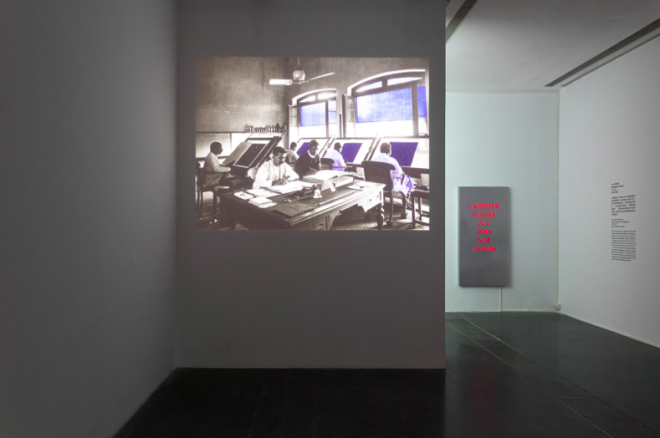
Raqs Media Collective, “An Afternoon Unregistered on the Richter Scale,” single- channel video, 2011 (installation view)
Raqs媒体集团, 《一个在里氏震级上没有记录的下午》,单屏录像,2011



